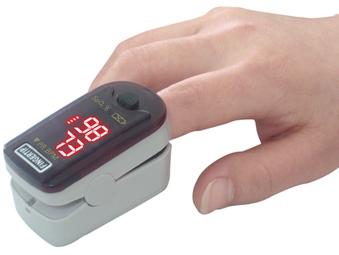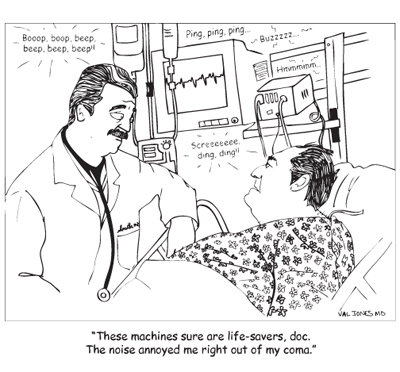September 20th, 2010 by IsisTheScientist in Better Health Network, Health Policy, Opinion, Research
10 Comments »

One of the disturbing trends I have been observing in physiology is the tendency to move away from many of the gold standard, invasive measurements classically described in the scientific literature to non-invasive measures which may or may not accurately reflect the parameter of interest.
One of these non-invasive measurements (which is not used in any of the manuscripts on my desk) that has become the bane of my existence is to use the saturation of hemoglobin in arterial blood (SPO2) as a surrogate for the partial pressure of arterial blood (PO2). SPO2 is measured with a device called a pulse oximeter.

Figure 1: A fingertip pulse oximeter. This device indicates that this individuals arterial hemoglobin is 98 percent saturated and his heart rate is 73 beats/min. Read more »
*This blog post was originally published at On Becoming a Domestic and Laboratory Goddess*
June 11th, 2010 by DrWes in Better Health Network, Humor, News, Research
No Comments »

You just can’t make this stuff up:
The underwear project, spearheaded by the nanoengineering professor, was funded by the U.S. military and its effectiveness will likely be tested on the battlefield.
“This specific project involves monitoring the injury of soldiers during battlefield surgery,” Wang told Reuters. “The goal is to develop minimally invasive sensors that can locate, in the field, and identify the type of injury.”
Ultimately, the waistband sensors will be able to direct the release of drugs to treat the wounded soldier.
I wonder what other creative uses our men in uniform will find for this? I can hear it now: “It’s not the size of the device, honey, it’s the metronome that’s in it!” (Heh.)
-WesMusings of a cardiologist and cardiac electrophysiologist.
*This blog post was originally published at Dr. Wes*
May 16th, 2010 by DrRob in Better Health Network, Health Policy, Opinion, True Stories
2 Comments »

 I saw the note on the patient’s chart before I opened the door: “Patient is upset that he had to come in.”
I saw the note on the patient’s chart before I opened the door: “Patient is upset that he had to come in.”
I opened the door and was greeted by a gentleman with his arms crossed tightly across his chest and a stern expression. I barely recognized him, having only seen him a handful of times over the past few years. Scrawled on the patient history sheet in the space for the reason for his visit were the words, “Because I was forced to come in.”
My stomach churned. I opened his chart and looked at his problem list, which included high blood pressure and high cholesterol –- both treated with medications. He was last in my office in November — of 2008. I blinked, looked up at his scowling face, and frowned back. ”You haven’t been in the office for over 18 months. It was really time for you to come in,” I said, trying to remain calm as I spoke.
He sat for a moment, then responded with very little emotion. “I’m doing fine. You could’ve just ordered my labs and called in my prescriptions. I don’t know why I had to be seen.” Read more »
*This blog post was originally published at Musings of a Distractible Mind*






 I saw the note on the patient’s chart before I opened the door: “Patient is upset that he had to come in.”
I saw the note on the patient’s chart before I opened the door: “Patient is upset that he had to come in.”







